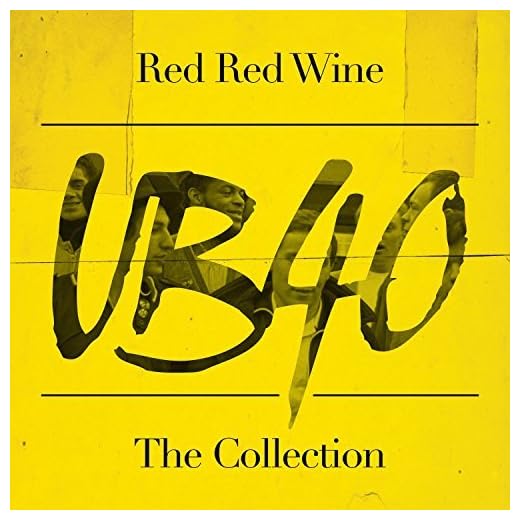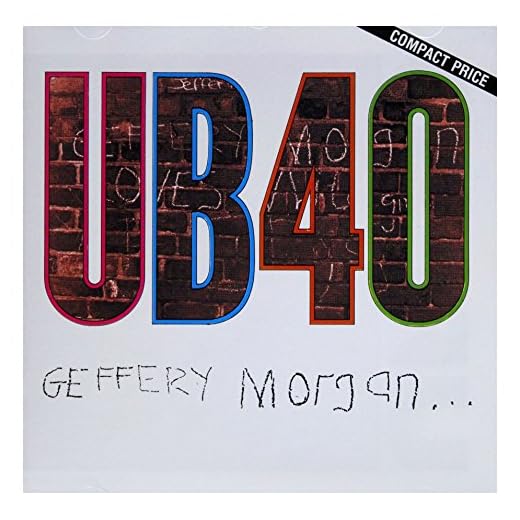

In the late 1980s, I immersed myself in the world of music while pursuing my passion for wine. One catchy track that always caught my attention was a melodic tribute to the grape. The craftsmanship behind this piece can be traced back to a talented British artist known for his soulful voice and impactful lyrics.
This renowned musician, Neil Diamond, originally released this memorable melody in 1967. It was his poignant storytelling that resonated with listeners, making it an enduring favorite across generations. However, the track gained a new lease on life in the 1980s when reggae group UB40 delivered a unique rendition, infusing it with their signature sound and expanding its reach even further.
For those exploring the nuances of this tune, consider how each version captures different emotions and styles. Whether you prefer the heartfelt original or the laid-back cover, both interpretations showcase the versatility of a composition that continues to captivate audiences worldwide.
Origin of “Red Red Wine”
Neil Diamond is credited with creating the memorable melody and lyrics of this iconic track in 1967. His original rendition was a blend of pop and folk influences, showcasing his songwriting prowess.
In 1983, UB40 reinterpreted the piece, transforming it into a reggae-influenced classic that gained immense popularity worldwide. Their version introduced new elements and rhythms, making it distinct from the original.
Both interpretations highlight the versatility of the composition, allowing it to resonate across different genres and audiences. The song’s themes of love and longing remain universal, contributing to its enduring appeal.
The Original Writer of Red Red Wine
The composition was initially crafted by Neil Diamond in 1967, featured on his album “Just for You.” This track showcases his unique blend of folk and pop, infused with heartfelt emotion and storytelling.
Neil Diamond’s Impact
Diamond’s influence on music is profound, with this piece illustrating his lyrical prowess and melodic intuition. The original version captures a sense of longing and melancholy, setting the stage for various interpretations by other artists.
Transformations and Covers
In 1983, UB40 reimagined the piece, introducing a reggae rhythm that gained significant popularity worldwide. Their rendition not only topped charts but also brought a fresh audience to the original work, showcasing the versatility of Diamond’s creation.
| Artist | Year | Version Type |
|---|---|---|
| Neil Diamond | 1967 | Original |
| UB40 | 1983 | Cover |
Influence of Neil Diamond on Popularity
Neil Diamond significantly impacted the fame of this track through his unique blend of storytelling and emotive delivery. His rendition introduced a wider audience to the melodic elements and lyrical depth, showcasing the song’s emotional resonance. The heartfelt interpretation by Diamond appealed to listeners, helping it to transcend its original context.
His ability to convey vulnerability and sincerity contributed to its lasting appeal. By incorporating elements of folk and pop, Diamond’s version attracted fans from diverse musical backgrounds, expanding its reach beyond traditional genres. This crossover success is evident in the way that it has been embraced by various artists, further amplifying its significance in popular culture.
Additionally, Diamond’s performance style and charismatic stage presence drew attention to the track during live performances, elevating its status in music history. The emotional connection he fostered with audiences created a strong bond, which resonated long after the initial release. This dynamic interaction played a crucial role in cementing its place as a classic within the music landscape.
His influence is not just limited to his version; it sparked a renewed interest in the original composition, leading to various interpretations over the years. Artists have cited Diamond’s approach as an inspiration, proving his impact on future generations of musicians. The legacy he created around this piece continues to thrive, as it remains a staple in live performances and music collections worldwide.
Cover Versions and Their Impact on the Song’s Legacy
Numerous interpretations have significantly shaped this track’s enduring appeal. UB40’s reggae rendition is arguably the most recognized, bringing fresh life and a different cultural perspective to the original. Their version topped charts globally, introducing the melody to new audiences and solidifying its place in pop culture. This transformation from a folk-inspired piece into a reggae classic showcases the versatility of the composition.
Other artists, like Jimmy Cliff and Neil Diamond himself, have also contributed alternate takes, each adding unique stylistic elements. Cliff’s version infuses a sense of soulful urgency, while Diamond’s original maintains a classic rock vibe. These adaptations expand the reach and relevance, ensuring the melody resonates across generations and genres.
As interpretations spread, they often spark renewed interest in the original, prompting listeners to explore the roots of the melody. This cycle of reinterpretation not only keeps the music alive but also encourages deeper appreciation of its lyrical themes and emotional depth. The continuous evolution through various styles has made the track a staple in diverse playlists, ensuring its legacy thrives in an ever-changing musical environment.
In the realm of cover versions, each artist brings their own story and audience, contributing to a rich tapestry of influence that enhances the track’s legacy. By exploring different genres and cultural contexts, interpretations ensure that this classic remains relevant and celebrated, fostering a lasting connection with listeners worldwide.
Analysis of the Lyrics and Themes in Red Red Wine
Achieving a deeper understanding of the lyrics reveals a poignant exploration of heartache and longing. The repetitive nature of phrases underscores a sense of vulnerability, encapsulating feelings of nostalgia and loss. Each line crafts a narrative of seeking solace in a beverage, highlighting its role as a temporary escape from emotional turmoil.
Emotional Resonance and Personal Reflection
The imagery evokes a vivid connection to personal experiences, allowing listeners to reflect on their own struggles. The juxtaposition of joy and sorrow within the verses creates a relatable contrast that resonates across different audiences. This duality enhances the overall emotional impact, making it more than just a casual listen.
Symbolism of Alcohol
The choice of alcohol as a motif serves to symbolize both comfort and despair. It represents a complex relationship, where the act of consuming becomes a means to cope with deeper feelings. This layered symbolism invites listeners to ponder the implications of seeking refuge in substances, adding depth to the narrative.
Red Red Wine in Popular Culture and Media
This track has made significant appearances across various forms of media, enhancing its cultural resonance. Notable films, television series, and advertisements have utilized its catchy melody and poignant themes, creating a lasting impression on audiences.
Film Appearances
- Featured in “The Breakfast Club” (1985), where it underscored the emotional dynamics among characters.
- Included in “Beautiful Girls” (1996), evoking nostalgia and bittersweet memories.
- Used in “The Hangover” (2009) to amplify comedic moments, showcasing its versatility.
Television References
- Regularly played in series like “The Office,” adding to character development and comedic timing.
- Highlighted in “Friends,” becoming a backdrop for memorable scenes.
- Utilized in reality shows, often in moments of reflection or celebration.
Commercials have also capitalized on its upbeat nature, associating the melody with themes of joy and relaxation. This strategic use has helped keep the tune relevant in contemporary culture, appealing to both older fans and new listeners.
In addition to film and TV, numerous covers and remixes have emerged, solidifying the track’s place in modern music history. These adaptations have not only introduced the melody to younger generations but also showcased how versatile the composition is across genres.
Overall, the integration of this classic piece into popular culture demonstrates its timeless appeal and ability to resonate emotionally with diverse audiences.
The Reception and Chart Performance Over the Years
This classic piece has experienced remarkable success across various charts globally. Initially released in 1967, it garnered attention by climbing to the top of the UK Singles Chart, where it remained for three weeks. Its early impact laid the groundwork for future interpretations and adaptations that would further enhance its popularity.
Chart Success in the United States
The American version, performed by UB40 in 1983, transformed its recognition, reaching number one on the Billboard Hot 100 chart. This reggae-infused rendition not only expanded its audience but also introduced the tune to a new generation. The single achieved multi-platinum status, solidifying its place in pop culture. Its appeal was reflected in its resurgence on various charts during the 1990s, demonstrating its lasting resonance.
Legacy and Continued Popularity
Over the decades, this melody has been featured in numerous films, commercials, and television shows, keeping it in the public consciousness. Its enduring legacy is evident through ongoing airplay and the emergence of fresh cover versions, further showcasing its adaptability. For those seeking culinary inspiration, pairing a great glass of wine with a delightful meal like how to cook lamb neck fillet quick can enhance the experience when enjoying this timeless track.








